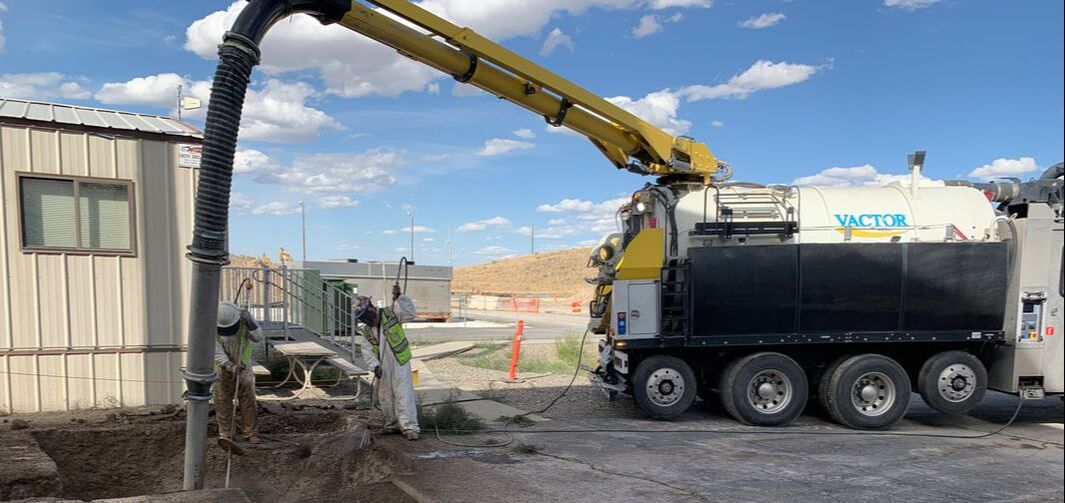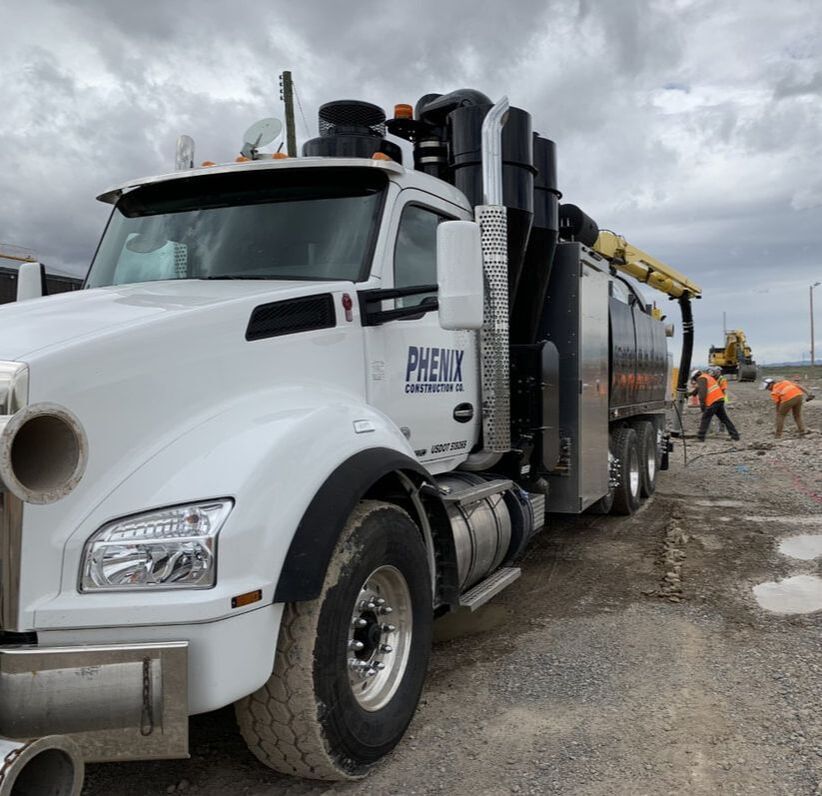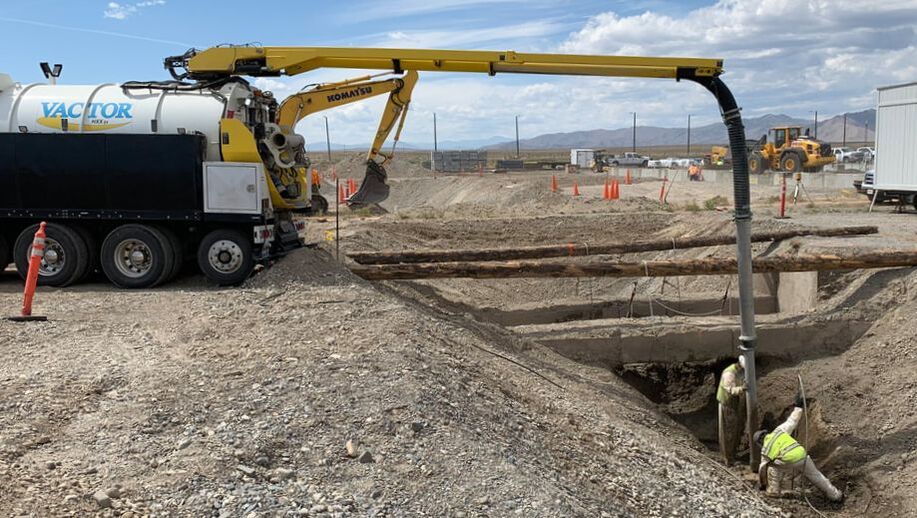Digging with Phenix Construction means digging with greater precision, dependability and safety.

What is Hydrovac Excavation?
Def·i·ni·tion: Hydrovac excavation is a precise, non-mechanical, non-destructive process that uses pressurized water and an industrial strength vacuum to simultaneously excavate and evacuate soil. As the pressurized water breaks up the soil it creates a slurry that is removed by a powerful vacuum into a debris tank.
Def·i·ni·tion: Hydrovac excavation is a precise, non-mechanical, non-destructive process that uses pressurized water and an industrial strength vacuum to simultaneously excavate and evacuate soil. As the pressurized water breaks up the soil it creates a slurry that is removed by a powerful vacuum into a debris tank.
What are the product specifications of the Phenix Construction vacuum excavator.
- Vacuum system rated at 6,200 CFM and 28-inch Hg
- Water pump system rated at 30 GPM and 3,000 psi
- Water tank capacity: 1,200 gallons
- Debris tank capacity: 16 cubic yards
- Boom reach: 27.5-foot overall reach, 320 degrees of rotation
How does hydrovac excavation work?
Hydrovac excavation equipment consists of an air vacuum and a high-pressure water device. High-pressure water cuts through the soil and breaks it up. The vacuum is then used to remove the slurry from the excavation area into a debris tank mounted on the truck. After the excavation is finished, the hole or trench is filled with clean compactable fill.
How deep can you Hydrovac?
Hydrovac excavation can be used in areas having limited access or frozen soil. This procedure employs extra-long vacuum and water hoses to allow workers to work 100 feet away from the equipment and excavate up to more than 40 feet deep.
Why are vacuum trucks important?
Hydrovac trucks can precisely and efficiently excavate in a variety of soil types and environmental conditions – Including: hard-packed soils, clay, rocky materials and in frozen soil conditions, as well as in remote areas or locations with limited access. Vacuum trucks are also used as a soft dig solution when excavating near other buried utilities to locate and preserve them.
Is the process noisy?
Our Vacuum equipment is equipped with a QuietPak sound-damping system featuring a Robuschi positive displacement blower rated for 6,176 CFM and 28-in. Hg. The system delivers higher airflow and quieter operation, with a decibel rating of less than 90 dB(A) throughout the RPM range. Featuring ultra-quiet inlet and outlet silencers acoustically matched to the blower, this system is ideal for work at higher altitudes.
Hydrovac excavation equipment consists of an air vacuum and a high-pressure water device. High-pressure water cuts through the soil and breaks it up. The vacuum is then used to remove the slurry from the excavation area into a debris tank mounted on the truck. After the excavation is finished, the hole or trench is filled with clean compactable fill.
How deep can you Hydrovac?
Hydrovac excavation can be used in areas having limited access or frozen soil. This procedure employs extra-long vacuum and water hoses to allow workers to work 100 feet away from the equipment and excavate up to more than 40 feet deep.
Why are vacuum trucks important?
Hydrovac trucks can precisely and efficiently excavate in a variety of soil types and environmental conditions – Including: hard-packed soils, clay, rocky materials and in frozen soil conditions, as well as in remote areas or locations with limited access. Vacuum trucks are also used as a soft dig solution when excavating near other buried utilities to locate and preserve them.
Is the process noisy?
Our Vacuum equipment is equipped with a QuietPak sound-damping system featuring a Robuschi positive displacement blower rated for 6,176 CFM and 28-in. Hg. The system delivers higher airflow and quieter operation, with a decibel rating of less than 90 dB(A) throughout the RPM range. Featuring ultra-quiet inlet and outlet silencers acoustically matched to the blower, this system is ideal for work at higher altitudes.


